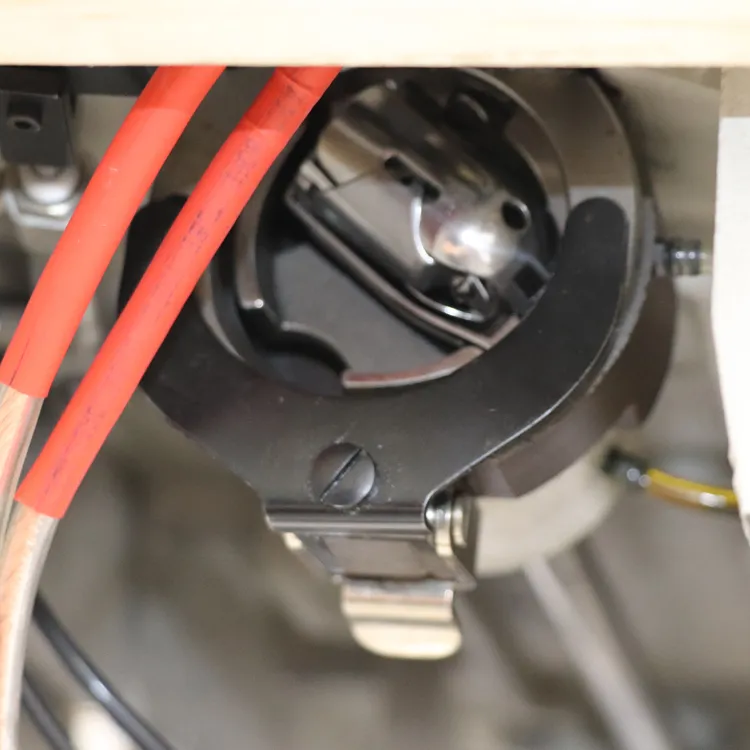Exploring the Benefits of Using Walking Feet for Sewing Thick Fabrics Effortlessly and Efficiently
Understanding the Walking Foot for Thick Fabrics
When it comes to sewing thick fabrics, having the right tools is crucial for achieving professional results. One of the most essential tools for this task is the walking foot, a specialized sewing machine attachment designed to help manage multiple layers of heavy material with ease. In this article, we'll explore what a walking foot is, its benefits, and how to use it effectively with thick fabrics.
What is a Walking Foot?
The walking foot is an attachment that can be fixed onto almost any sewing machine. Unlike a standard presser foot, which only presses the fabric from the top, the walking foot operates in sync with the feed dogs of the sewing machine. It features a set of feed rollers that grip and move the fabric from the top, while the feed dogs continue to pull the fabric from the bottom. This dual action helps prevent the layers of fabric from shifting or slipping, ensuring a more consistent and accurate stitch.
Benefits of Using a Walking Foot
1. Even Feeding of Fabric One of the primary advantages of using a walking foot is its ability to feed multiple layers of thick fabric evenly. This is especially important when working with materials such as canvas, denim, or quilting layers, where misalignment can easily occur.
2. Reduces Bunching and Tucks Thick fabrics can be unwieldy and prone to bunching. The walking foot minimizes this risk by ensuring that each layer is fed together smoothly, resulting in neat, even seams that lay flat.
3. Versatility Walking feet are versatile and can be used for various sewing tasks, not just thick fabrics. They are useful for quilting, sewing knits, and working with any material that might slip under a regular presser foot.
4. Improved Stitch Quality The precise feeding action helps to improve the quality of stitches. Sewists often find that their stitches are more uniform when using a walking foot, leading to a more polished finished product.
walking foot for thick fabric

How to Use a Walking Foot with Thick Fabrics
Using a walking foot may seem intimidating at first, but once you understand the basics, it becomes a straightforward process. Here are some tips for using a walking foot effectively with thick fabrics
1. Attach the Walking Foot Properly Follow your sewing machine's manual to attach the walking foot securely. Make sure it's aligned properly so that it functions well with the feed dogs.
2. Choose the Right Needle and Thread When sewing thick fabrics, it’s important to use a heavier needle, such as a size 90/14 or 100/16, which is suitable for thick materials. Additionally, using a strong thread, such as poly or polyester, can prevent breaking and ensure durability.
3. Test on Scraps Before starting on your main project, always sew a practice piece of the fabric you’ll be using. This lets you adjust tension and stitch length, ensuring that you achieve the best results.
4. Sew at a Moderate Speed Thick fabrics can be challenging to sew, so take your time and sew at a moderate pace to maintain control. This can help you avoid mistakes and achieve a cleaner finish.
5. Adjust Presser Foot Pressure Some sewing machines allow you to adjust the pressure of the presser foot. If you find that the fabric isn't feeding smoothly, reducing the pressure can help the walking foot do its job better.
Conclusion
The walking foot is an invaluable tool for anyone working with thick fabrics. It not only eases the sewing process but also enhances the final appearance of your projects. Whether you are a novice or a seasoned sewist, mastering the walking foot will open up new possibilities for your sewing endeavors. With a bit of practice and the right techniques, you’ll be well on your way to creating stunning pieces with thick fabrics.
-
Heavy Duty Leather Sewing Machine: A Must-Have for Professional LeatherworkNewsMay.28,2025
-
Leather Sewing Machine: Essential for High-Quality LeathercraftNewsMay.28,2025
-
Extra Heavy Duty Sewing Machine for Premium Leather ApplicationsNewsMay.28,2025
-
Walking Foot Cylinder Arm Sewing Machine: Precision and Power CombinedNewsMay.28,2025
-
Industrial Cylinder Arm Sewing Machine: Engineered for High-Performance StitchingNewsMay.28,2025
-
Cylinder Bed Sewing Machine: A Powerful Solution for Precision StitchingNewsMay.28,2025
-
Zigzag Sewing MachineNewsMay.12,2025





























